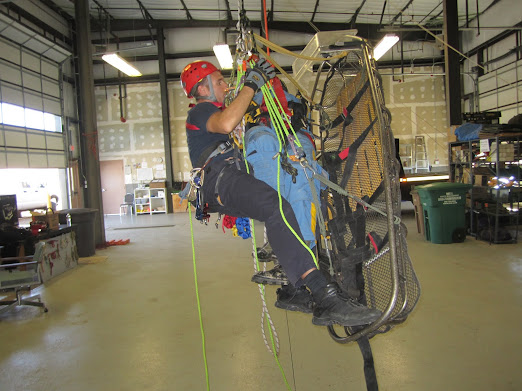To become accredited by MRA, a team has to pass three different field tests based on guidelines established by the association. The tests are conducted on appropriate terrain in the team's home area by at least three current MRA teams working together to evaluate the applicant group that's being tested. The tests include high-angle rescue (rock rescue), ice and snow, and wilderness search. Accredited teams must retest every five years to maintain their accreditation.
Our team was very happy to pass the first of three tests: Wilderness Search. It was run like any real search operation that's gone beyond the hasty search phase. In this case, the hasty phase was verbalized by our coordinator as all participants and evaluators gathered around the command trailer for the briefing. As usual, searchers were given packets with information about the missing subjects, maps of the area, the weather forecast, and safety and communications information. When all field teams had their assignments, we headed out to do what we always do... except, this time, we were being watched and evaluated and had to answer evaluators' questions as we worked.
All in all, the mission went really well. Teams located most of the clues that had been placed in the rather large search area, and we located both subjects, one of whom required medical evaluation and care and a litter evacuation to an imaginary waiting ambulance. The other subject, who was mobile, was found by one of the containment teams driving Forest Service roads.
At the end of the mission later that afternoon, evaluators met privately to discuss the operation and how we did, then came over to our waiting group to give us feedback and announce that we'd passed. Yay!
And now for test number two, rock rescue, in October. So, that means extra practice for many of us on the technical rescue team. Here's Patrick practicing a mid-face litter scoop in the SAR building (without the cliff face, that is):
 | ||
| The rescuer gets the injured victim into the "tuxedo" to protect his spine. |
 |
| The rescuer maneuvers the patient into the litter. |
 |
| Tah-dah! Ready for raise. |
In other Coconino County SAR news, our team was involved in a body recovery below Midgley Bridge in Sedona. See: Midgley Bridge Suicide Briefly Closes 89A.
